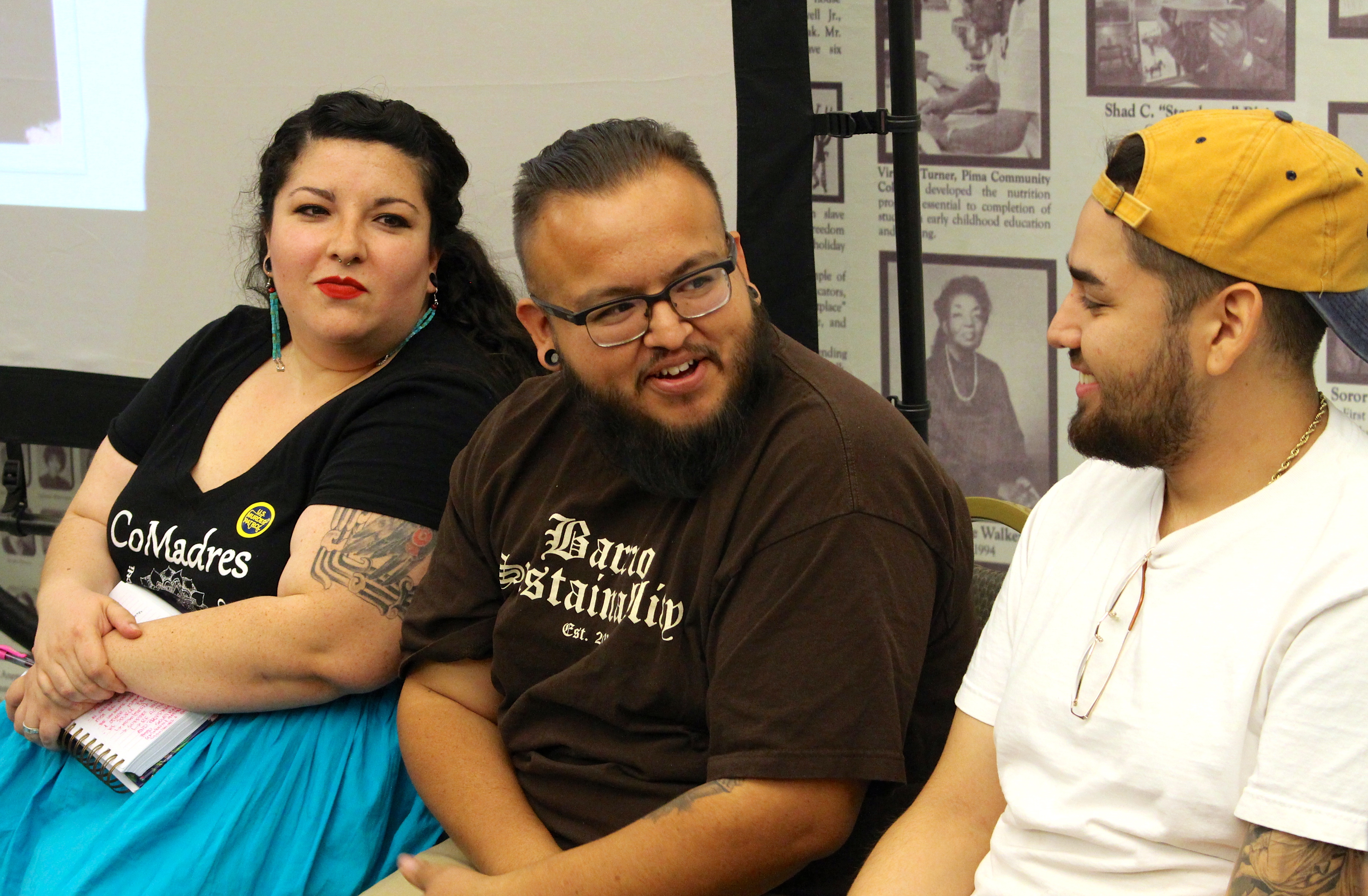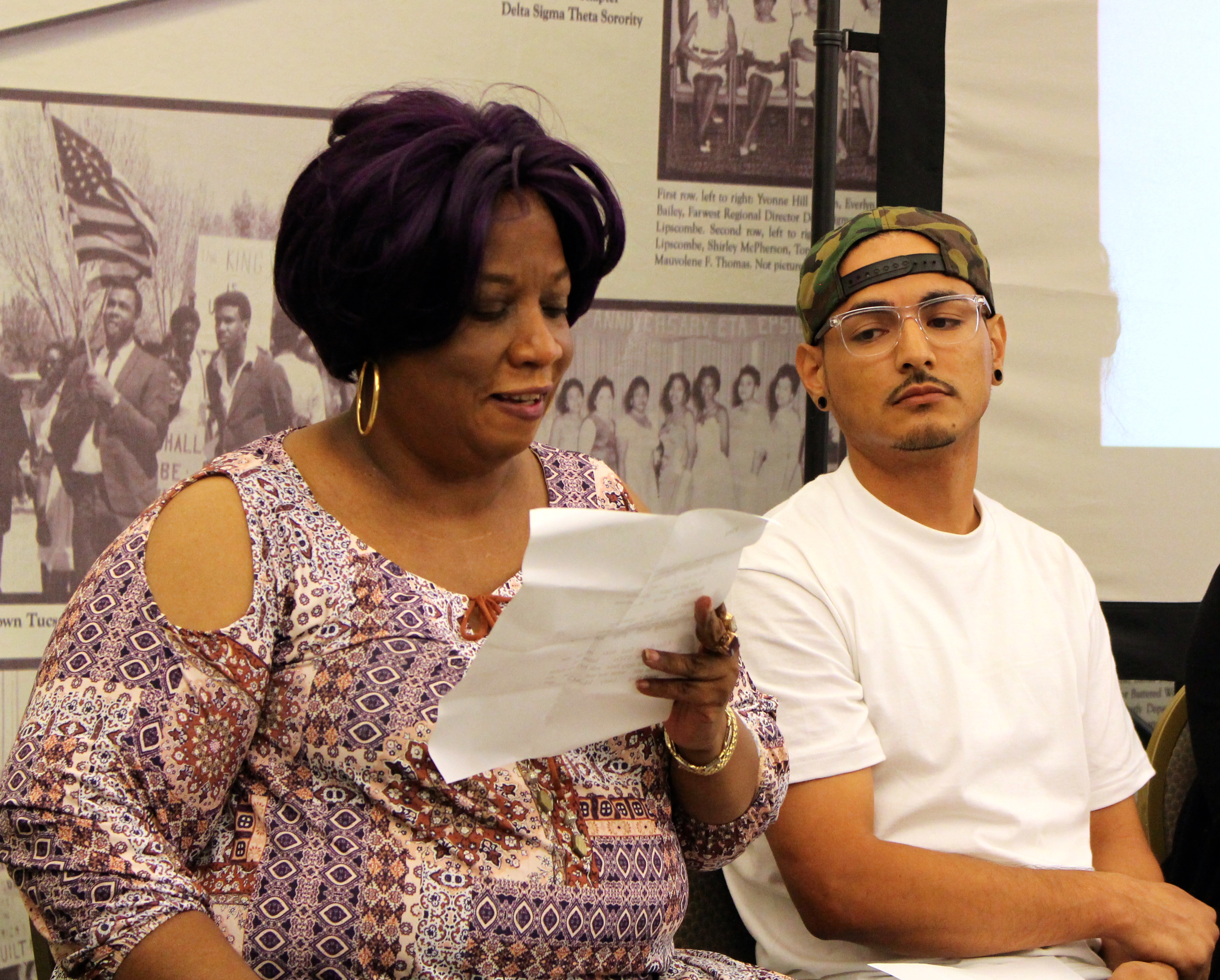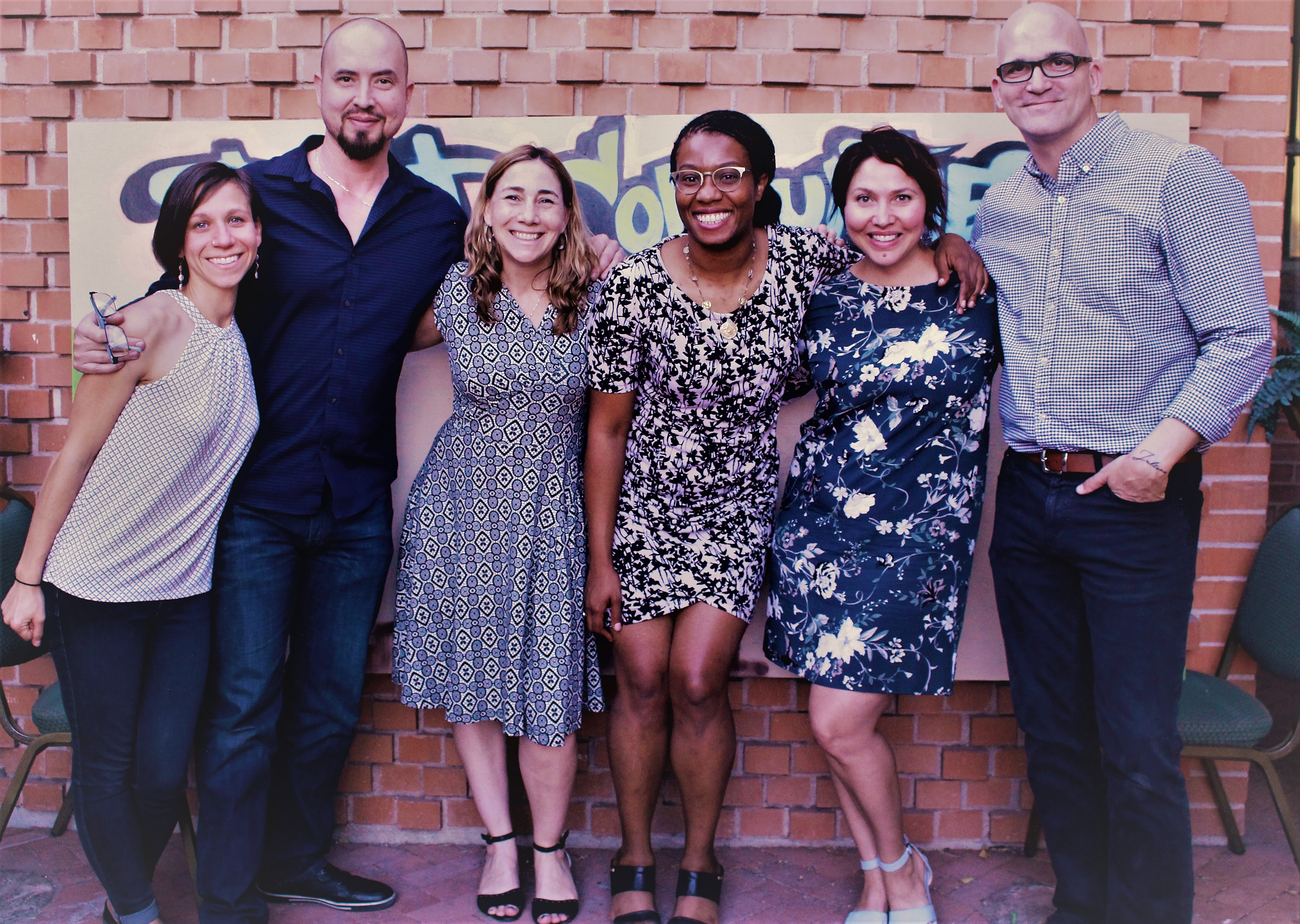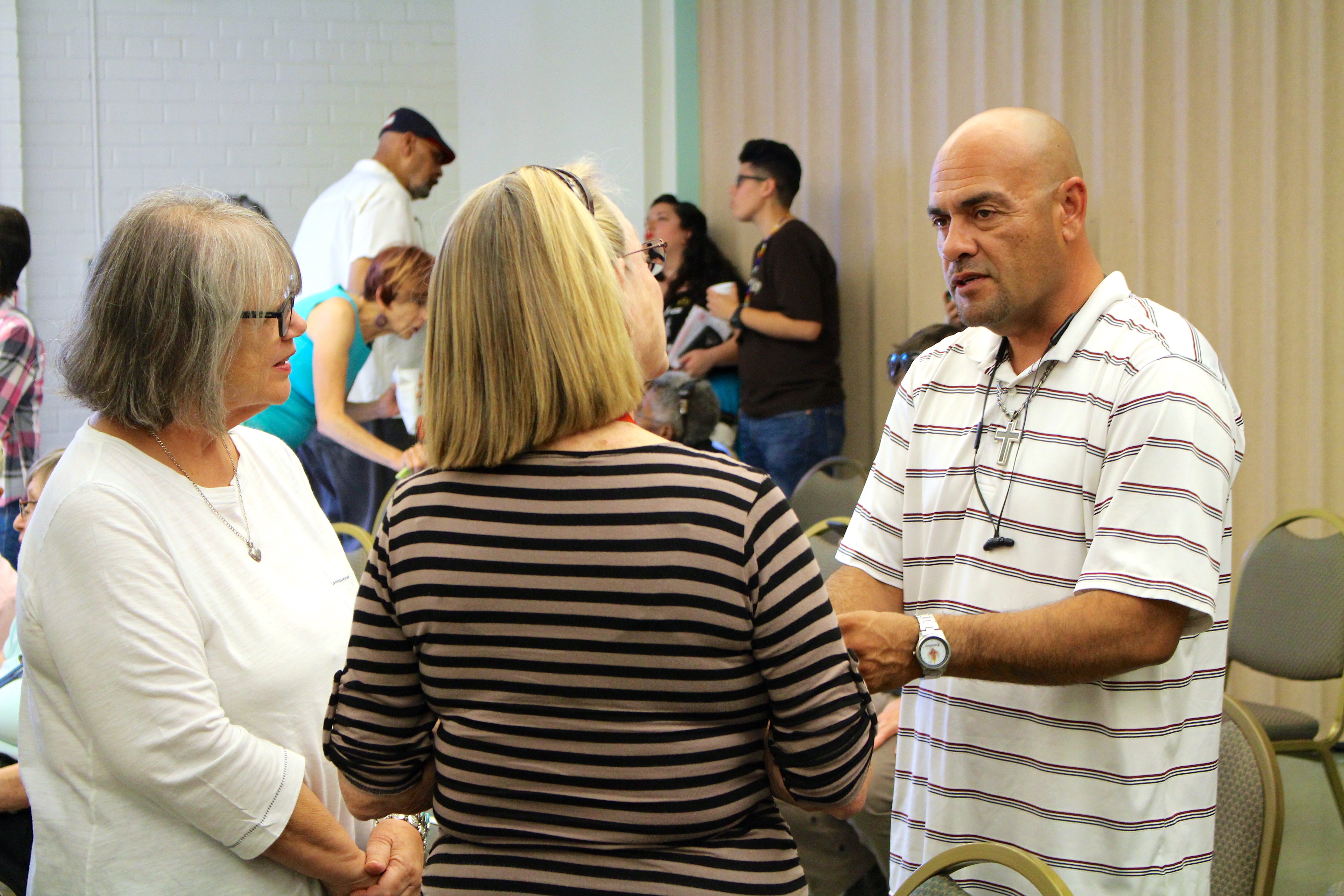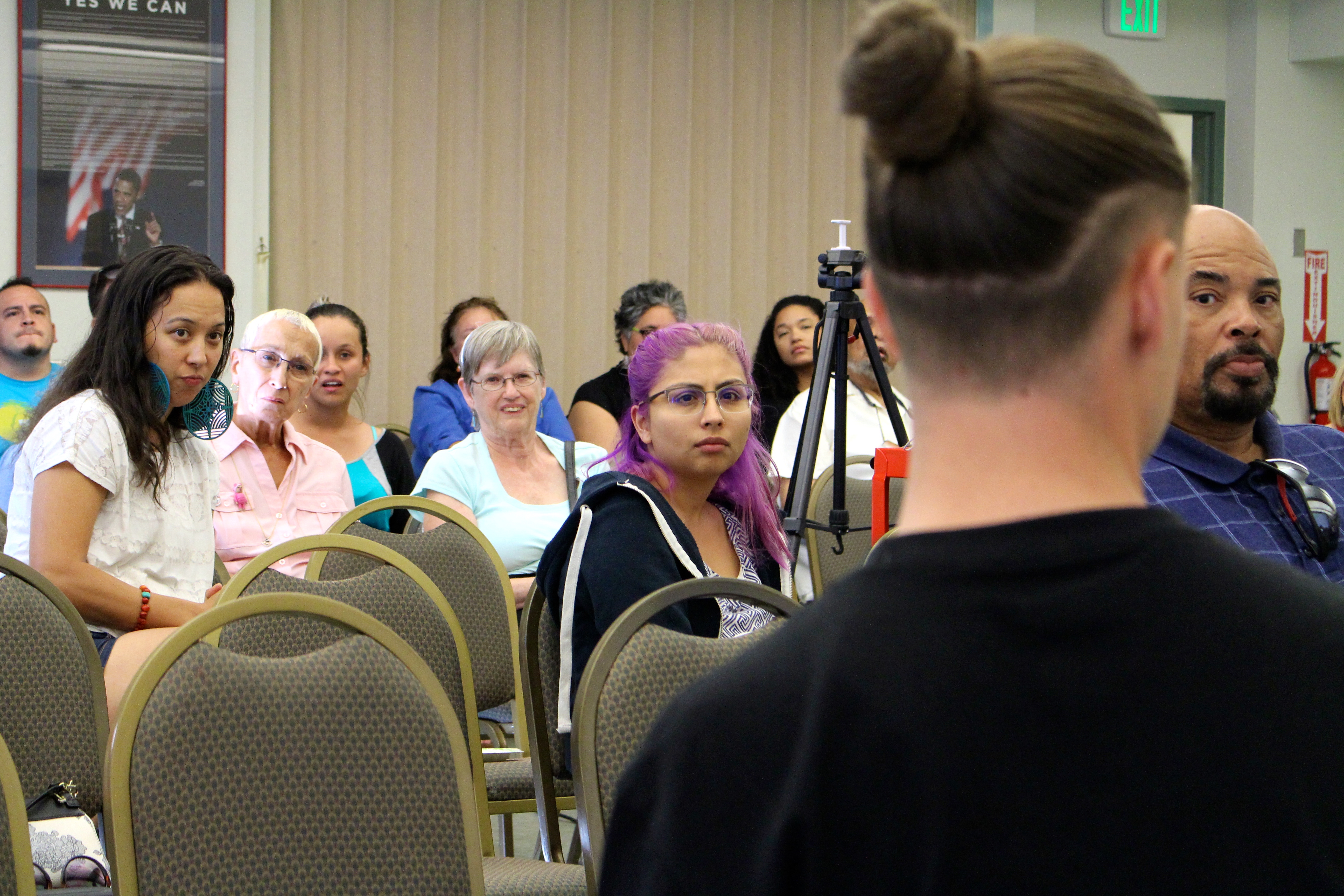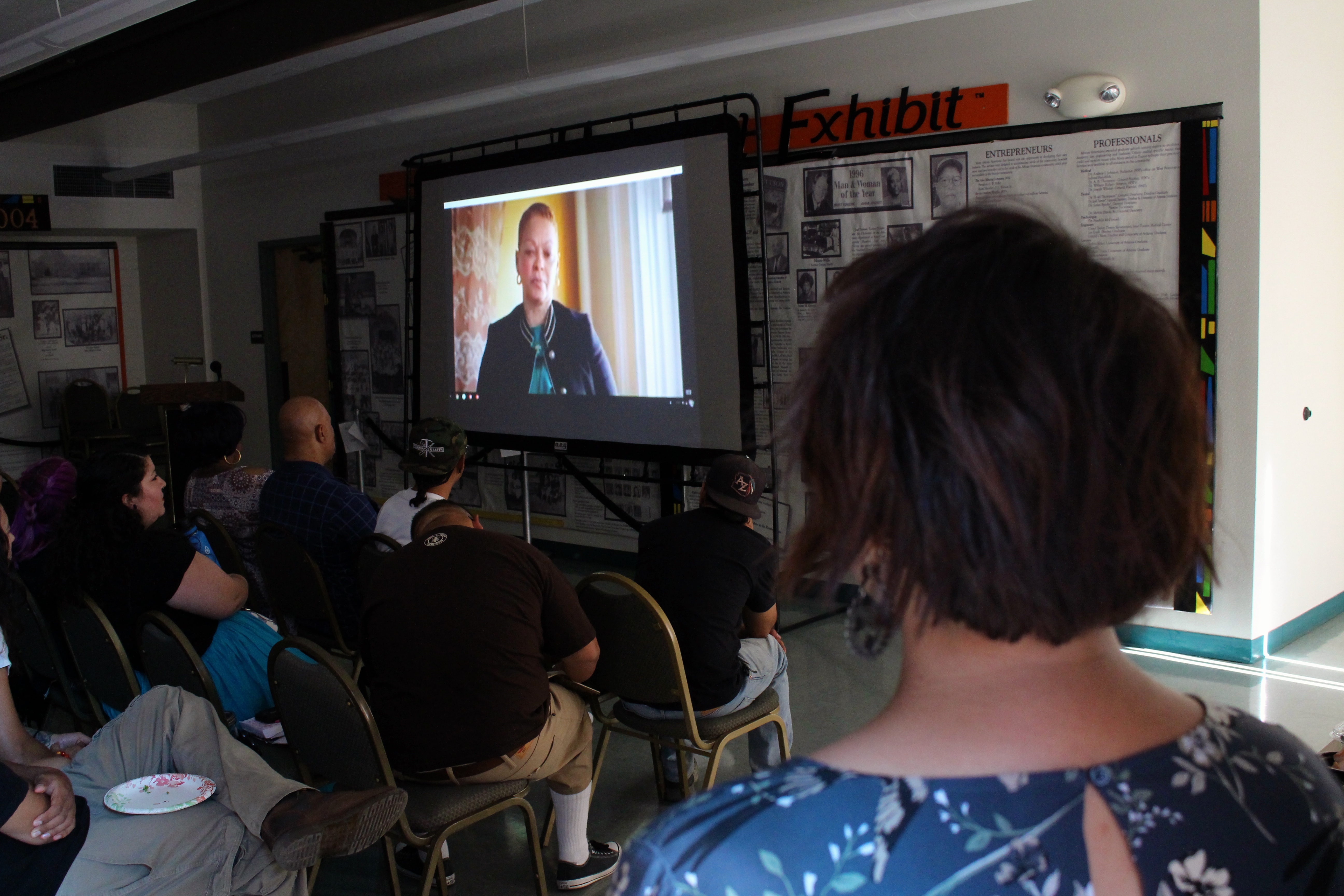To help shift the narrative locally about violence, AFSC-Arizona, in collaboration with Common Justice, hosted a screening and conversation on harm, accountability, and safety on May 17. The screening included a collection of short videos with directly impacted people—Ever After: Stories of Violence, Accountability, and Healing—that provided a more nuanced understanding of harm, its impacts, and how we as a society might respond to it.
The live screening was followed by a panel discussion on the question of justice and safety. Namely, what makes a safe, secure, and just community? It included local leaders from Tucson Second Chance Bail Fund (TSCBF), Flowers & Bullets (FB), Tierra y Libertad (TYLO), LOCAS, and Ojalá Systems. These vibrant, community inspired, responsive, and organized collectives are working to amplify safety and justice in their communities from uncommon vantage points.
While each collective’s approaches are not yet readily seen as alternatives to the punishment system—which fractures and harms people and communities—they demonstrate that when we organize, take care of each other, and resource ourselves, we neuter state power.
The police and, more broadly, the criminal legal system is cast as central to safety. However, the system has historically operated as a site of violence rather than resolution and healing for people and communities on the margins. Essentially, the system is not organized to protect the poor, people of color, those who lack documents, the non-gender conforming, or non-heteronormative. TSCBF, FB, TYLO, LOCAS, and Ojalá are manifesting communities in which everyone thrives.
Safety is more than the absence of danger.
Ultimately, communities who bear the brunt of police and prison violence find ways to operate outside of the system to develop front-end, middle, and back-end alternatives to the punishment system. Each of the collectives represented on the panel—using diverse yet connected efforts—is doing the work of securing and resourcing communities. They are all doing it without the permission and outside of the imaginary of the state, whose notion of justice is limited to punishment, which we know does not work.
Safety is more than the absence of danger. It is the proactive creation of space in which all people can experience and express their life to the fullest. It is about overcoming fear, rebuilding human communities, and resisting from a place of strength. We all have a basic right to feel safe, and all of us share responsibility for creating safety in our lives and communities.
As Meghan McDowell argues in Insurgent Safety: Theorizing alternatives to state protection (2017), in order to disrupt the idea that public safety is the same as carceral control, we must ask what it means to be and feel safe in our communities. In response to this call, AFSC-Arizona and Flowers & Bullets have been collaborating on a research project that asks people to think about what safety looks and feels like.
So, what makes a safe, secure, and just community? Well, the data reveals that our community has an expansive take on what “safe/secure communities” look and feel like. In our research, we have found that it’s the connection between people that makes the whole stable and safe. It is the act of creativity, space-making, and play that contribute to just and safe communities.
Help us continue to define justice and safety in your community. Complete our 5-minute AFSC-Arizona/Flowers & Bullets survey, or leave a comment below.
—By Grace Gámez, Ph.D., Reframing Justice Project Coordinator
Categories: Blog, News & Updates, Reframing Justice, Uncategorized
